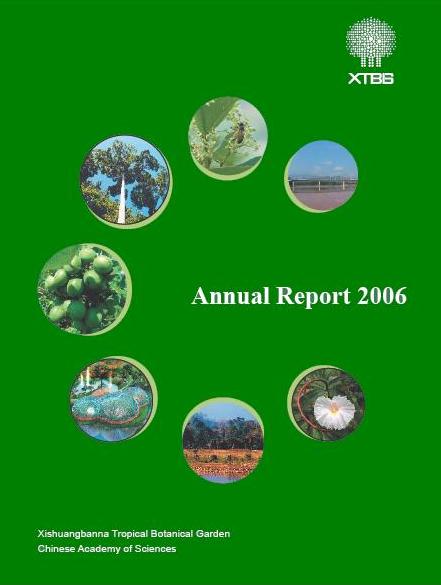As XTBG approaches its fiftieth anniversary, we are experiencing a major phase of growth, in terms of our living collections, our public outreach and research activities. With this rapid growth also comes the need for careful and thoughtful planning. During my first year as Director of XTBG, I was pleased to host Professor Sun Xiaoxiang who acted as the chief designer of the new master plan for XTBG. With Dr. Sun’s support and guidance, we successfully completed the third and final version of the master plan for XTBG this year. This master plan has received strong support and appreciation from a national top-level scientific committee, chaired by CAS Vice President, Professor CHEN Zhu. The committee also included four academicians who specialize in landscape architecture and related disciplines. In addition to providing a clear idea for a spatial arrangement of different functional sections of XTBG, the plan also serves as a guide for future landscape management. While we fully expect this plan to adapt to changing conditions and management, it currently illustrates our vision for XTBG’s future development.
As an essential part of the master plan, we tried to anticipate XTBG’s growth and development over the next five years. This five year action plan grew out of a series of brainstorming sessions among senior XTBG scientists and administrators. Compared to previous action plans, this plan focuses on expanding the impact that XTBG could achieve as a research and conservation institution, instead of just listing the number of publications, patents and grants produced by our staff. While our academic and funding achievements have been substantial, we hope to better integrate our efforts towards practical and applied questions facing Yunnan, China, and the globe.
On August 11, 2006, Professor Lu Yongxiang visited XTBG for the fourth time as the president of the Chinese Academy of Science. Two years ago, when he last visited XTBG, Professor Lu stated: ‘Botanical garden is not only just a place for satisfying scientists’ curiosity, instead, it needs to be appreciated by and useful to common public, local government and the scientists at home and abroad.’ This important statement now has become the guideline for botanical garden development within CAS. During his visit, Professor Lu was satisfied by the progress achieved by XTBG’ Species Enrichment Project. He highlighted the necessity, in XTBG’s role as one of the national botanical gardens, to preserve and to conduct research on strategic plant resources, especially to meet the country’s present and future needs, such as biofuel plant resources.
Another unforgettable event this year was the opportunity to host the annual meeting of the Association for Tropical Biology and Conservation (ATBC). Attended by more than 300 biologists, with more than 200 international participants representing 40 different countries, the meeting was a huge success. The participants greatly enjoyed our Chinese hospitality and efficiency. Representing the largest international organization devoted to tropical biology and conservation, scientists from around the globe discussed current findings and exchanged news. Meanwhile, our colleagues and graduate students also enjoyed this marvelous chance for a face-to-face chat with many well-known scientists. One of the most prominent outputs of the meeting was the ‘Kunming Declaration’. The declaration emphasized the great concern shared by tropical biologists everywhere about the potential tropical biodiversity crisis, particularly in Asia. Asia currently has the highest deforestation rates of any major region in the world.
For 2006, we kept our focus on regional biodiversity conservation. We are actively involved in the ‘Biodiversity Conservation Corridor Initiative (BCI)’ program. BCI is a large-scale biodiversity conservation action for the Greater Mekong Subregion endorsed by Asian Development Bank (ADB). In late January, Dr. CAO Min led a team from XTBG on a one-month field trip to Cambodia for a preliminary feasibility study. The project aims to help Cambodia to set up the first national botanical garden, and thus enhancing the national capacity in biodiversity management in Cambodia. Additionally, we organized and hosted two training courses at XTBG for the purposes of regional capacity building: ‘Training Course on Advanced Techniques in Frugivory and Seed Dispersal’ and ‘Chinese National Canopy Workshop’. As the first and newly elected president of ATBC’s Asian-Pacific Chapter, I have done everything possible to facilitate collaboration among scientists throughout tropical Asia and to enhance our overall capacity for research and conservation.
Meanwhile, we have also been very involved in the local communities of Xishuangbanna. We co-sponsored a master plan study for our hometown, Menglun, and we established a mechanism to promote cooperation between XTBG and the Administrative Bureau for Xishuangbanna National Natural Reserve. We also initiated major programs in the forests surrounding the gardens, including the large mapped forest plot (20-ha) for long-term forest ecosystem study and co-management of the limestone forest (225 ha) in Menglun. XTBG staff has also contributed significantly to reduce poverty in Mengla county. The second phase of garden development has been appointed as one of the key projects for ecotourism by Yunnan provincial government, with a grant totaling 15 million RMB grant.
On February 20, 2007, the third day of the Chinese New Year, the garden received a total of 10,800 visitors, thus setting the record for the highest number of visitors in a single day to the garden. For a remote garden like XTBG, situated in the rural countryside near the southern Chinese border, which was truly a phenomenal number of visitors. Looking at the crowd, I was immersed in deep thought: What could XTBG provide these visitors to take back with them on their long journey home? How could XTBG use this obvious public interest in the natural world to promote sustainable management of our environment? How could XTBG ensure that future generations would be able to enjoy the beauty and splendor of our gardens?

Dr. Chen Jin
Director of XTBG

PDF to download
1. Cover pdf
2.Annual Report 2006 |


